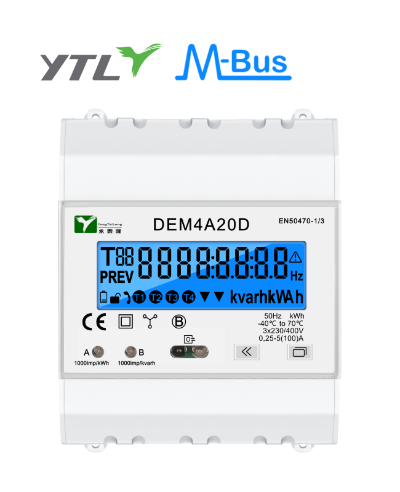An electronic energy meter, also known as a digital energy meter, is a device that measures and records the electrical energy consumed by a household or commercial building. It is a crucial component in the process of billing and managing electricity usage.
Unlike traditional electromechanical energy meters, electronic energy meters use solid-state components to measure energy consumption. These components include microcontrollers, digital displays, and memory chips. The use of electronic components allows for greater accuracy and reliability in measuring energy consumption, as well as providing additional features such as remote monitoring and data logging.
Electronic energy meters operate based on the principle of measuring the flow of electrical energy through a circuit. They use current transformers to measure the amount of current flowing through the circuit, as well as voltage transformers to measure the voltage. By continuously monitoring the current and voltage, the electronic energy meter can calculate the amount of energy consumed over a given period of time.
One of the key advantages of electronic energy meters is their ability to provide real-time data on energy consumption. This data can be used by utility companies to accurately bill customers for their electricity usage, as well as by consumers to monitor and manage their energy usage. Additionally, electronic energy meters can be equipped with communication modules that allow them to transmit consumption data to a central database for monitoring and analysis.
Another important feature of electronic energy meters is their ability to support various tariff structures. This means that they can be programmed to apply different tariffs for energy consumption based on the time of day, season, or overall usage. This capability enables more flexible billing options and encourages consumers to shift their energy consumption to off-peak hours, thereby reducing the load on the electrical grid.
In addition to measuring energy consumption, electronic energy meters can also provide valuable information about power quality. They can monitor parameters such as voltage fluctuations, harmonics, and power factor, which allows them to identify potential issues in the electrical system. This information can be used to improve the overall efficiency and reliability of the power distribution network.
Overall, electronic energy meters play a crucial role in modern energy infrastructure by accurately measuring and monitoring electricity usage. Their advanced features and capabilities make them an essential tool for both utility companies and consumers in managing energy consumption and promoting energy efficiency. As technology continues to advance, electronic energy meters will likely continue to evolve, offering even more sophisticated features and benefits in the future.

 English
English 简体中文
简体中文










.png?imageView2/2/w/500/h/500/format/png/q/100)
.png?imageView2/2/w/500/h/500/format/png/q/100)


